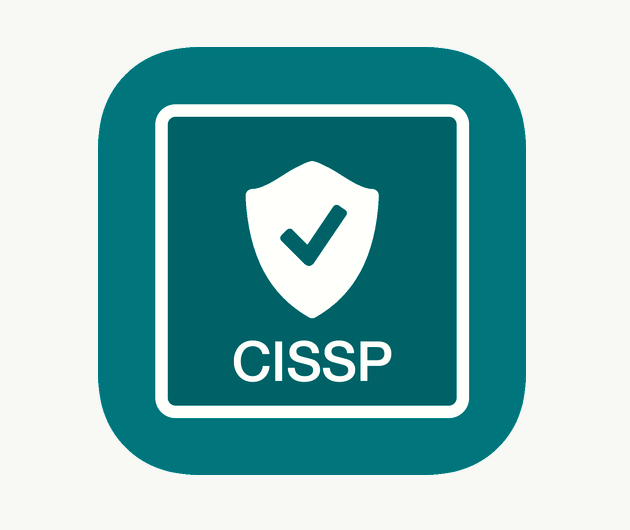CISSP - Question Bank 04
Test your knowledge of CISSP with these multiple choice questions. Each Question Bank includes 20 practice questions that have been designed to measure your knowledge of key ideas.
A key factor to keep in mind is that guessing is better than not answering a question.
Every single question on the CISSP exam is a four-option multiple choice question with a single correct answer. Some are straightforward, such as asking you to select a definition. Some are a bit more involved, such as asking you to select the appropriate concept or best practice. And some questions present you with a scenario or situation and ask you to select the best response.
StartQ1. Which of the following is not true?
A. Tunneling employs encapsulation.
B. All tunneling uses encryption.
C. Tunneling is used to transmit data over an intermediary network.
D. Tunneling can be used to bypass firewalls, gateways, proxies, or other traffic control devices.
Q2. Tunnel connections can be established over all except for which of the following?
A. WAN links
B. LAN pathways
C. Dial-up connections
D. Stand-alone systems
Q3. What do most VPNs use to protect transmitted data?
A. Obscurity
B. Encryption
C. Encapsulation
D. Transmission logging
Q4. Which of the following is not an essential element of a VPN link?
A. Tunneling
B. Encapsulation
C. Protocols
D. Encryption
Q5. Which of the following cannot be linked over a VPN?
A. Two distant LANs
B. Two systems on the same LAN
C. A system connected to the Internet and a LAN connected to the Internet
D. Two systems without an intermediary network connection
Q6. Which of the following is not a VPN protocol?
A. PPTP
B. L2F
C. SLIP
D. IPSec
Q7. Which of the following VPN protocols do not offer encryption? (Choose all that apply.)
A. L2F
B. L2TP
C. IPSec
D. PPTP
Q8. At which OSI model layer does the IPSec protocol function?
A. Data Link
B. Transport
C. Session
D. Network
Q9. Which of the following is not defined in RFC 1918 as one of the private IP address ranges that are not routed on the Internet?
A. 169.172.0.0–169.191.255.255
B. 192.168.0.0–192.168.255.255
C. 10.0.0.0–10.255.255.255
D. 172.16.0.0–172.31.255.255
Q10. Which of the following is not a benefit of NAT?
A. Hiding the internal IP addressing scheme
B. Sharing a few public Internet addresses with a large number of internal clients
C. Using the private IP addresses from RFC 1918 on an internal network
D. Filtering network traffic to prevent brute force attacks
Q11. A significant benefit of a security control is when it goes unnoticed by users. What is this called?
A. Invisibility
B. Transparency
C. Diversion
D. Hiding in plain sight
Q12. When you're designing a security system for Internet-delivered e-mail, which of the following is least important?
A. Nonrepudiation
B. Availability
C. Message integrity
D. Access restriction
Q13. Which of the following is typically not an element that must be discussed with end users in regard to e-mail retention policies?
A. Privacy
B. Auditor review
C. Length of retainer
D. Backup method
Q14. What is it called when e-mail itself is used as an attack mechanism?
A. Masquerading
B. Mailbombing
C. Spoofing
D. Smurf attack
Q15. Why is spam so difficult to stop?
A. Filters are ineffective at blocking inbound messages.
B. The source address is usually spoofed.
C. It is an attack requiring little expertise.
D. Spam can cause denial of service attacks.
Q16. Which of the following security mechanisms for e-mail can provide two types of messages: signed and enveloped?
A. PEM
B. PGP
C. S/MIME
D. MOSS
Q17. In addition to maintaining an updated system and controlling physical access, which of the following is the most effective countermeasure against PBX fraud and abuse?
A. Encrypting communications
B. Changing default passwords
C. Using transmission logs
D. Taping and archiving all conversations
Q18. Which of the following can be used to bypass even the best physical and logical security mechanisms to gain access to a system?
A. Brute force attacks
B. Denial of service
C. Social engineering
D. Port scanning
Q19. Which of the following is not a denial of service attack?
A. Exploiting a flaw in a program to consume 100 percent of the CPU
B. Sending malformed packets to a system, causing it to freeze
C. Performing a brute force attack against a known user account
D. Sending thousands of e-mails to a single address
Q20. Which of the following is a digital end-to-end communications mechanism developed by telephone companies to support high-speed digital communications over the same equipment and infrastructure that is used to carry voice communications?
A. ISDN
B. Frame Relay
C. SMDS
D. ATM
- Question Bank 00
- Question Bank 01
- Question Bank 02
- Question Bank 03
- Question Bank 04
- Question Bank 05
- Question Bank 06
- Question Bank 07
- Question Bank 08
- Question Bank 09
- Question Bank 10
- Question Bank 11
- Question Bank 12
- Question Bank 13
- Question Bank 14
- Question Bank 15
- Question Bank 16
- Question Bank 17
- Question Bank 18
- Question Bank 19


